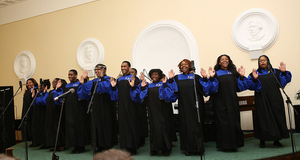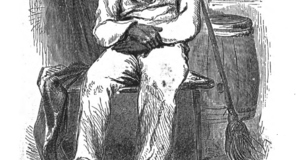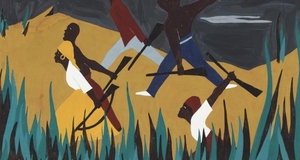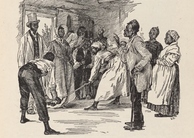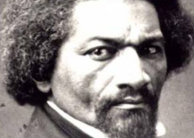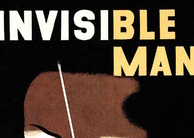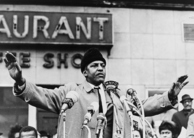Featured Article:Addressing Shortcomings in Afro-Pessimism
By
2016, Vol. 8 No. 09 | pg. 2/2 | « The Problem with Social Death ApplicationsWhile the ontological state of Black social death is an important concept for resistance scholars to understand, the typical advocacy of complete societal pessimism in response to that ontological arrangement is incomplete at best. Many in Afro-Pessimism use the basis of social death to determine the question of Black political orientation in a way that is problematic. This is not to say that social death theorization is not important, but that there is a vital distinction that needs to be made both in terms of its application toward traditional political processes and ensembles of Blackness. Frank Wilderson, Associated Professor of African-American Studies and Drama at the University of California-Irvine, is quite possibly the leading Afro-Pessimist scholar. He concludes his discussion of social death by advocating for one to “embrace its disorder, its incoherence, and allow oneself to be elaborated by it if, indeed, ones politics are to be underwritten by a desire to take down this country” (2007). In summary, his application of social death is used as a reason why Black life cannot be oriented at any level of meaningful production within society. While Wilderson is correct that the material labor and symbolic currency born out of Blackness will always be consumed by whiteness, his conclusion is paradoxical at some level. If humanism is the grammar by which civil society determines the register of subjectivity, why then is that matrix appropriate in determining the state of Black life, if Black life is inherently the position of what is incommunicable? If social death theory’s application is one that concludes an impossibility of meaningful Black productivity, then Afro-Pessimism becomes nothing but a body of literature that echoes the same sentiments as those who would understand Black life as a state of nothingness in plain racist terms. Understanding Black ontology should definitely involve an understanding of the social deadness of the Black subject in relation to society, but it should not be used as the standard to measure internal liberation. The distinction here is important because too often Afro-Pessimists scholars like Wilderson conceptualize Black resistance as a singular orientation toward society. Indeed their work is important to understand the manner in which society operates upon Black subjects, but it is insufficient to describe an ethic that allows for the pursuit of meaning within Blackness itself. In this regard, scholars should understand Black resistance as occurring on two different levels: the ontological and the intra-ontological. The distinction being made is between the ontological state of Blackness as determined outside of humanity proper versus the life within the ontological state of Blackness as understood through social death. If social death is the state of the Black, what then speaks to the state of the Black amongst Blacks? It would be a mistake on the part of any scholar to concern themselves with one and not the other. This paper uses the term intra-ontology in reference to the varying ontologies within social death. This is the Black among Blacks. These are those spaces within Blackness that only the Black can ever understand or occupy.Though they exist outside of the production of the human (within the category of social death), there are Black affektual politics that have been with the slave since the ship. These are the emotional and spiritual ontologies within Blackness that connected slaves of different lands, languages, and religions into one community. Black intra-ontology can never achieve the plane of recognition because it can only be understood within Blackness, which by definition is the position of social death, but those affektual spirits and emotions ought not be neglected. Social death should guide Black resistance strategy in understanding the position of the Black within civil society, but it speaks not to the arrangement of Black intra-ontological questions. If this is measured by social death it only produces a cycle of endless internal psychic violence because the Black would only be met with the discovery of a violent reality of its existence through affirmations of social death. Intra-ontological resistance must not be a question of how the world understands Blackness, because the position of the slave is one that cannot be articulated in terms of hegemony. If it is so that the Black inherently experiences the world through a different ontological register, then measures of Black liberation cannot be articulated through the lens of humanist grammars. Jared Sexton, the Director of the African-American Studies School of Humanities at the University of California-Irvine, is another leading scholar in Afro-pessimism. He explains that there is indeed social life that exists within social death. There are many that condemn the invocation of social death as overly pessimistic, but “this acceptance or affirmation is active; it is a willing or willingness, in other words, to pay whatever social costs accrue to being black, to inhabiting blackness, to living a black social life under the shadow of social death. This is not an accommodation to the dictates of the antiblack world” (Sexton 2010). This is to say that it is indeed possible to both affirm the state of social death and actively pursue the social life that exists within Blackness. This is not the typical critique of social death, but rather it is a necessary specification of the social life within social death that Sexton speaks. Social death is adequate in terms of measuring the ontological state of the human versus the Black, but a different rubric is required in mapping social life within social death. One such rubric is fleshly politics. This concepts derives from the plantation in regards to the manner in which slaves would temporarily reclaim and weaponize their bodies as a site of political protest against their state of enslavement. Fleshy politics is an example of an appropriate rubric for measuring liberation within intra-ontological politics because these bodily resistances surely did not change the physical state of enslavement, but it did immeasurable good for the mental and psychological state of those in the master’s cage. Alternate orientations to the flesh “excavates the social (after)life of these categories: it represents racializing assemblages of subjection that can never annihilate the lines of flight, freedom dreams, practices of liberation, and possibilities of other worlds” (Weheliye 2014). In contrast to Wilderson’s line of flight away from bodily coding, it is important to reclaim the atrocity of the flesh as a means of agency within capture through the remapping of whiteness. The enslaved female flesh was the site of great violence, but there is a false “dichotomy between the material/political and the personal, in large measure [because even though the] body, so deeply personal, is also a political arena. Their work has demonstrated the extent to which women's bodies were unique sites of domination under slavery” (Camp 2002). Though the body was in the possession of the slave master, the enslaved found personal meaning in its temporary recapture in fleshliness which satisfied an innate desire for selfhood. The illegality of using the flesh as a site of pleasure became a political counter-investment. While conventional Afro-Pessimist would argue that this personal orientation does nothing in terms of the ontological position within Blackness, the personal victory the enslaved experiences as a result of that temporary reclamation is meaningful in both psychological and emotional terms. This is important because if there is never room for personal liberation, and Black resistance is only understood in terms of material questions within civil society, it reproduces the same sacrificial logic that social death explains. Resistance strategies that only take meaning in notions of full agency are recipes for failure because these only measure Black liberation on the register of civil society which can never grapple with the inherent confine in which Black life exists. Balancing Ontological versus Intra-OntologicalTo take the conclusion of the previous section and use the call from intra-ontological liberation as a justification for the ontological state of Blackness would be a violent imposition of whiteness. The arrangement of Blackness as an ontological question versus Blackness as an intra-ontological question is a criminalization of Black thought. The two are not mutually exclusive, nor should one be viewed as a sufficient substitute for the other. Instead, they are complimentary; they are necessary components to the assemblage of Black resistance strategy. While the importance of a conception of personal liberation is addressed above, the ontological position of Blackness within civil society is a dilemma that must be also be carefully addressed. There is a needed balance between the two because one measure can easily violate the other. At no point should the ontological state of Blackness within social death must not be affirmed in pursuit of intra-ontological freedom. This topic is one of great complexity. If the Black isolates a subject position that is not a subject position, is political liberation possible? This is where the theorization of social death should primarily direct Black political strategy as understood through the lens of conventional Afro-Pessimism. The Middle Passage not only structured the ontological condition of Blackness, but it also birthed an era of modernity that marked the conception of a new structuring paradigm of the world: Anti-Blackness. Anti-Blackness is a structure of oppression based upon the accumulation of fungibility understood through the death of the slave. At its core, it is a set of violent acts that “underwrites the modern world's capacity to think, act, and exist spatially and temporally. The violence that robbed her of her body and him of his land provided the stage on which other violent and consensual dramas could be enacted” (Wilderson 2010). America’s initial conception was one that was born out of violence. America is a country built on stolen land by a stolen people. The foundation of this country is one that is covered in bloodshed. In order to build the country, it was a requirement to clear the land of the indigenous bodies that occupied it which fuelled their genocide. This type of militaristic conquest under the guise of religious freedom and civilization justified mass extermination of Black and Red bodies without remorse, but not only was violence the birth of the American nation space, but it was also the explanation for its maintenance. Since the birth of the nation was one that had already defined the Blackness as disposable, the political progress of the country continued the reproduction of such logic. First is the issue of indigenous genocide. While the commonly accepted narrative of the American Revolution is a desire for free political autonomy absent British restrictions, there is also a less told narrative. Early desires for Manifest Destiny began not with the Constitution of the United States but with the pressures of the early American state to explore Native lands out West in order to take those lands as their own. They felt as though limiting themselves to the eastern shores deprived them of a natural right to own territory occupied by the Natives, and when the British government denied these desires for further colonial expansionism, it fuelled war tensions (James 2007). This trend is also true for slavery, and the American Civil War is an example. The maintenance of Slavery played a pivotal role in fuelling the American Civil War. Southern States wanted to continue the institution of slavery in new states admitted into the Union, and when this was denied, it fuelled the outbreak of the Civil War. These desires for empire not only created America, but they also sustained it through more war. This is why there exists an antagonistic relationship between the slave and civil society. The Black relationship to the United States, and really western civil society writ large, has always been one defined through violent terms. The very being of the Black comes to be in the world through the active colonial murder of the African. Often it is forgotten that Black itself is not an identity that it denoted by a specific topography or practice, but rather it is known through constructionist conceptions that are projected upon, and not by it. The case is a simple one; “Give Turtle Island back to the "Savage.” Give life itself back to the Slave. Two simple sentences, fourteen simple words, and the structure of U.S. (and perhaps global) antagonisms would be dismantled” (Wilderson 2010). Slavery provided not only the economic means for which the United States to produce itself, but it provided the map by which it could exist culturally and socially as well. If the United States was founded upon the genocide of the indigenous and the death of the African, then how can it ever be an ethical entity? It is not, and it should not be the end-point of Black political emancipation. Black movements in particular should abandon the United States as a source of hope because of the antagonistic relationship that it has with civil society. In terms ontological positioning, the ultimate point of freedom for the Black subject is the disorganization of society’s operation upon Black flesh because “for Black people, civil society itself- rather than its abuses or shortcomings - is a state of emergency” (Wilderson 2003). The power dynamic in the status quo exists as such through the continuous destructive consumption of the Black. Obviously, chattel slavery has ended but the slave relationship the Black has with the United States, and the world as a whole, is unchanged. In every major institution, Black bodies experience oppression and inequality at a systemic level. From ailing educational structures in overly impoverished neighborhoods, to the state of mass incarceration, Black subjects in America are targeted and subjected to overwhelming discrimination and abuse in every field. This is no coincidence. Recent theorizations have even gone as far as to identify the state of mass incarceration as the newest era of Black enslavement. Though not on the plantation, there is a case to be made that the slavery now exists in “the mass incarceration of people of color. Although African American men comprise less than seven percent of the population, they comprise half of the prison and jail population. Today, one out of three African American men is either in prison, on probation, or on parole” (Alexander 2006). This pattern of surveillance, restriction, and destruction of Black bodies is the very same process of enslavement from the plantation. This has been and continues to be the truth of Black life in western civilization since the dawning of the Middle Passage. Now, there are a myriad of liberal scholars who will point to sentimental hollow policies such as the Civil Rights Act to make the case for why the state of Black oppression is getting better. While the form of Black slavery has definitely changed and become more nuanced in its application, the foundational truth of said slavery remains unchanged. The question remains of how to create consistency in ontological and intra-ontological resistance. Is it materially possible to both call for a disruption of civil society while finding points of productivity in society? The answer is yes, at the margins. It is here that this paper makes another substantive departure from conventional pessimistic theorization, and again, it is useful to refer to Wilderson’s work. His theorization of the Black’s antagonistic relationship with the world concludes that the world is parasitic on Black life. Thus, he forwards the end of the world as the only ethical alternative. Afro-Pessimists are often criticized for their highly theoretical abstraction with this concept. Though there are no explicit specifications of what the end of the world is or how Black resistance movements are to specifically get there, it is widely accepted that the position is more of an epistemic orientation rather than one that forwards literal destruction. In addition, Wilderson calls for Black refusal to engage in civil society in an unflinching paradigmatic analysis meaning that any form of engagement with civil society would require Black abjection. This is the point of friction that this paper seeks to address. Even though Black bodies stand in an antagonistic relationship to the world, there needs to be a distinction made. The notion that any level of stability within civil society affirms Black Death has two major problems. First, it produces the exact same pattern of ressentiment which reproduces the internalization of self-hate which only sets the stage for communal violence in an attempt to cleanse. If the standard for measuring the effectiveness of Black movements is the destruction of every part of society, then failure is the only appropriate descriptor for every Black resistance strategy in history. If this is the case, the internalization of Black slaveness becomes all but inevitable by reinforcing psychological, mental, and emotional chains of depression on all those who seek to resistance. The second problem is that Black bodies have no means of creating instability at the state or societal level. Society is a manifestation of hundreds of years of economic and political accumulation that has yielded countless weapons against the oppressed. Simply expecting the dominant order to forgo the use of those weapons is a fantasy. The scope of orienting towards the end of the world in terms of instability is far too large. The end of the world is not possible. Afro-Pessimism is far too separated from the material practice of resistance in this regard. If the justification for detaching from state involvement is that it requires a sacrificing of Black flesh, then resistance strategies must consider the effect of a complete embrace of political refusal. Calls for absolute Black pessimism is also an abjection of Black flesh in the same manner Wilderson bases the need for the end of the world because an open refusal and rejection to at least seemingly conform to degrees of social norms will have deadly consequences for Black bodies. For pessimists to call for Blacks to openly embrace physical death in pursuit of theory is irresponsible and unethical. Wilderson uses the question of flinching as a misnomer. The term seems to suggest that any participation in or any implicit affirmation of society is an insufficient Black politic. The problem is that at its core the very nature of Black life is one that requires a series of strategic and tactical flinches. This means that in different situations and settings, Black bodies take different forms. If confronted on the street by a racist police officer, asking for one to unconditionally refuse to recognize the position of the officer is in turn asking for Black suicidal politics. As posited above, there is something inherently valuable within Black intra-ontological arrangements, and as such, suicide is a non-starter. Not only is this a strategy for sustaining intra-ontological freedom, but it is also a strategy for pursuing the disorganization of civil society. It problematizes society’s ability to easily script the nature of Black life and Black resistance. Tactical flinches allow Blackness to become a thousand different villains disguised as citizens. It is a protective mechanism for those who seek to fight against tyranny without inciting the wrath of the tyrannical. This is not to say that Black resistance should ever flinch in its orientation to civil society at a fundamental level. It is to say that in order for Black life to exist in a world that wishes its death, it is necessary to disguise that orientation and strategically present it in certain settings. Some will be highly critical of this notion because it will be perceived as a call to sacrifice expressions of authentic self in an appeasement of the dominant order. Instead, this is a call to reassess the very understanding of political orientation. Black resistance should embody refusal at the core level; that should be internalized, and it is the very process of mystifying that core refusal in acts of fugitive transgressions against civil society that renders its violence inoperable. This is not a sacrifice of the authentic self, but the mystification and protection of authentic Blackness in an act of rebellion against societal production of anti-Black violence. This is an effective means of navigating Black ontological questions. Again, Black liberation cannot be measured in terms of the absence of white violence, but it must be measured using different rubrics. In terms of Black ontological resistance as an ensemble, this resistance is a question is the maintenance of Black communities through the inoperability of violence by complicating perceptions of Black criminality. Since the slave has no capacity to orchestrate the manifestation of the end of the world, then Black orientation to the end of the world must begin with one of constructing the illegality of the body. This is the means in which Black movements must employ fleshly politics in modern resistance strategies. The end of the world should not be understood through the instability of civil society or the state, but rather, it should be understood through the ability of Black communities to render themselves self-sufficient which should very well include a strategic and criminal relationship with civil society. DisclaimerThe views and opinions expressed in this article are those of the authors and do not necessarily reflect the official policy or position of any agency of the U.S. government. ReferencesAlexander, Michelle (2006). The New Jim Crow. The New Press. Camp, Stephanie (2002). “The Pleasures of Resistance: Enslaved Women and Body Politics in the Plantation South, 1830-1861.” In The Journal of Southern History, 68.3, 533-572. Cooper, Frank Rudy (2007). “Against Bipolar Masculinity: Intersectionality, Assimilation, Identity Performance, and Hierarchy.” In UC Davis Law Review, 39, 853. doi: http://papers.ssrn.com/sol3/papers.cfm?abstract_id=1003000 Farley, Anthony (2005). “Perfecting Slavery.” In Loyola University Chicago Law Journal, 36, 225-256. Franklin, V. P. (1983). “Review of Slavery and Social Death by Orlando Patterson.” In The Journal of Negro History, 68.2, 212-216. doi: http://www.jstor.org/stable/pdf/2717724.pdf?_=1461074098161 James, Ian (2007). Paul Virilio: (Routledge Critical Thinkers). Cambridge University Press. Patterson, Orlando (1982). Slavery and Social Death. Harvard University Press. Sullivan, Shannon (2008). "Whiteness as Wise Provincialism: Royce and the Rehabilitation of a Racial Category." In Transactions of the Charles S. Peirce Society: A Quarterly Journal in American Philosophy, 44.2, 236-262. doi: https://muse.jhu.edu/article/240803 Tibbs, Donald F and Tyron P. Woods (2008). “The Jena Six and Black Punishment: Law and Raw Life in the Domain of Nonexistence.” In Seattle Journal for Social Justice (pp. 235-283). Wilderson, Frank (2003). “Gramsci's Black Marx: Whither the Slave in Civil Society.” Social Identities: Journal for the Study of Race, Nation and Culture. 9:2. Wilderson, Frank (2003). “The Prison Slave as Hegemony’s (Silent) Scandal.” In Social Justice, 30.2, 18-27. doi: http://www.jstor.org/stable/29768181?seq=1#page_scan_tab_contents Wilderson, Frank (2010). Red, White, & Black: Cinema and the Structure of U.S. Antagonisms. Duke University Press. Suggested Reading from Inquiries Journal
Inquiries Journal provides undergraduate and graduate students around the world a platform for the wide dissemination of academic work over a range of core disciplines. Representing the work of students from hundreds of institutions around the globe, Inquiries Journal's large database of academic articles is completely free. Learn more | Blog | Submit Latest in African-American Studies |








